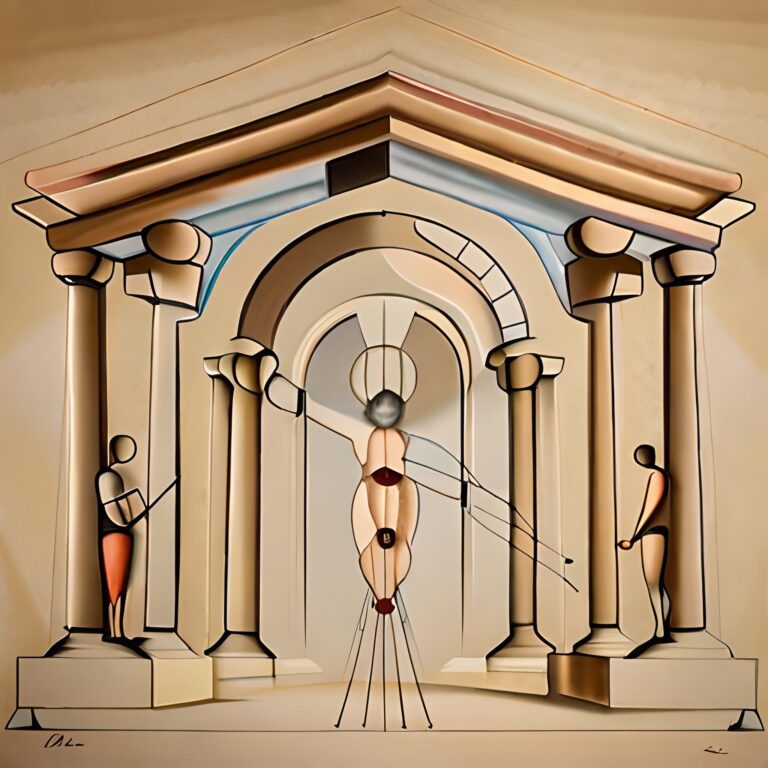Lately, I have been thinking about bodies. I have been thinking about how things show up in the body and how we perceive what is showing up. This post is still an exploration of the second of the four aspects of an Extraordinary Spiritual Experience (ESE), which is Appearance. If you remember, the first aspect is Set and Setting, and the body can also be a part of that element of an ESE as well. So today we are thinking about what appears in and with the body during an ESE.
Regardless of whether the ESE we experience is abstracted and ‘disembodied’, or it is deeply embodied, we can only speak of these experiences relative to the thing with which we have had the experience, namely our bodies. This seems so fundamental, we just don’t think about it. But this base level consideration influences every interpretation that comes after the ESE. In the truest sense, our first Setting for any ESE is the body that is experiencing the ESE. I have been reading a lot of articles and books about the body and how we perceive by way of the body and also how what we think of our bodies alters how we perceive. It is highly complex and deeply murky.
Think about this for a moment: choose any primary sense and focus on what you are perceiving from the outside world with that sense. It is likely highly clarified and clear. Maybe it is music playing on your phone. You are hearing notes and chords and patterns that elicit particular feelings. Maybe you are watching people walk by on the street. You see colors and clothing, movement and different styles of hair, relationships to space and person. A smell, a thing touched, perhaps. Taste is a little less clear, but still mostly dependent on things outside of yourself.
Now, turn any one of those senses inside yourself. What do you hear inside your body? Maybe some borborygmi, a click in your shoulder as you reach for a glass. But probably not much. You can only see the backs of your eyelids and maybe some patterns if you squeeze your eyes shut tightly. You can’t really use the sense of touch with any clarity for what is inside of you, or if you can your knowledge of what it feels like is very limited because of skin and muscle covering what you might be prodding at. Smell is not really an internal experience at all. Taste, again, is a little weird when it comes to insides and outsides, but we taste more the things we put in our mouths than what is in our bodies.
Our perception and sense of our bodies is highly dependent on what is happening outside of us in relation to how we experience that outside inside of us. We can describe far more clearly what is outside our bodies than what is inside. Bodies and how we perceive them, ours and other bodies, are epically bizarre. One of the key insights from my second experience with psilocybin during the Johns Hopkins study was that bodies have minds of their own. They will do whatever they are going to do no matter what we think. Some things we have control over when it comes to our bodies; most things we don’t.
The thing is, though, I have been reading these articles and books about the body and experience. Some are very deep and philosophical. But not one of them has answered a very simple question, and that question has been bothering me a lot lately. A body is something we pretty much take for granted, insofar as everyone has one and we know that we also have one. But what is a body? This is the question that does not get answered. What is a body?
Leveling Up
As we begin this discussion, I want to acknowledge that there are multiple levels with which to consider the question, What is a living body? At its most basic, the question is answered, I guess, medically and scientifically:
A human body is an interdependent connection between cells, tissue, sinew, tendons, muscle which sustains itself by feeding on various living things (other bodies).
We can call this material, purely functional, aspect Level 1. My use of levels here is of my own creation, and is influenced by various systems of thought about bodies. Chakras from yogic philosophy, the sefirot from Kabbalah, New Age energetic body philosophy, and some Aquinas and medieval philosophy thrown in for good measure. This essay, by the way, is not intended to be scientific. I merely hope not to contradict the scientific in anything I say. My intentions here, and throughout the entire investigation of ESEs, is to think narratively, poetically, semiotically, by way of the humanities and theologies about such things.
Answering our question, What is a body?, immediately complexifies because many living bodies have nervous systems and brains which allow those bodies to have an interior sense and experience of the external world. This interior sense and experience leads to decision making and directionality, as in, ‘there is some food and it/we/I am going to move toward it’. Level 2 then would be the sensate interior experience and sensorially experienced world which determines movement and activity.
As we move up the ladder of being, some creatures have significant feeling reactions to their environment and experience, which translates broadly as emotionality. We can see this in dogs, for instance, who have a whole range of emotional life. I am not a cat person, but I trust the same is true of the felines as well. Sadness, happiness, depression, contentment, anger, caring – these are all emotional responses those of us with companion animals and those who relate to more advanced animals can often identify with such creatures. It is likely our companion animals are also responding to our emotional lives as well, so there is a reciprocity to our emotionality. Emotional responses to sensorial Level 2 experiences are what I am calling Level 3.
At Level 4, we are now, more often than not, in the realm of speculation. Emotions lead to mentation and reflection. We, as human beings, for instance, can think about our emotions and reflect on what they mean and what we did and then make decisions into the future based on past experience. This level, Level 4, is the level of thinking. This is the element that begins to separate creatures that can function on this level from other creatures. It can be identified with future planning and coordination about that future – emotional response + thinking + a conception of time. While we can think a lot about how humans do this, I think an equally interesting avenue is to consider deeply what the orca whales are up to in the Mediterranean these days. They are coordinating with their friends and family and telling others how to “screw up an asshole’s ride” on the high seas. And the orcas appear to be teaching their friends around the world how to wreck boats as well. Also, the octopi are organizing underwater villages in Australia. Both of these examples show high level planning and organization with forward thinking.
At level 4, we can make some reasonable, though speculative, assumptions about our high functioning neighbors in the wild. Apes, bonobos, elephants, dolphins, whales, octopi, and others all appear to plan, coordinate, and enact future ideas, just as we do. It is likely their communication between one another is relatively advanced as well.
At Level 5, we are deep into the speculative. Level 5, I would say, is high level abstraction, the linking of the symbolic with the mental and emotional, and ‘retconning’ (which means creating ‘retroactive continuity’ in a story) this level back into the prior levels in such a way that Level 5 becomes primary and causational, as opposed to Level 5, much less Level 4, being an ‘epiphenomenon’. Level 5 is the realm of the spiritual.
Level 5 seems to me to be dependent on some recursive aspect of the mind. By ‘recursive’, I mean a kind of doubling back, a sort of ‘re-reflection’ on already existing thoughts and perceptions. As recursive reflection happens, these thoughts and perceptions layer and build upon each other into high-level abstractions that allow us to reflect on past and present experience in such a way that they create even greater abstractions, culminating in God, gods, higher energies, spiritualities, etc.. It seems unlikely to me that other Level 4 creatures are capable of this. Or if they are, they are not capable of enacting the abstractions in the world-changing and world-building ways we are, and they have no way to communicate them. Which is not to say animals are not conscious and aware. I believe they are.
I have not dived into the complex and profound discussion of conscious awareness here, which is a whole series of essays itself (that may come up sooner rather than later). Suffice it to say, though, that levels 4 and 5 press into questions of consciousness, awareness, and what it means for us. There are several scientists who apply consciousness to all material things. Dr. Donald Hoffman believes that the foundation of reality is consciousness, and that we cannot perceive anything reasonably called reality. Christof Koch is a fascinating scientist who holds a very materialist view of things, while also allowing that most things have a sort of consciousness.
Each of these five levels require the experience and presence of a body. Even if we are serious about the disembodied potentials of Level 5, the level at which we could say, for instance, that souls use bodies to have an earthly, material experience, communication about that experience and potential requires the presence of other bodies in order for that level to have any traction in the lived experience of level 5 creatures. So when we talk about what bodies are, we can be talking about bodies at any of these levels, or any combination of these levels.
Each of these levels map out our sense of the body differently than the level below it. Higher levels emerge from lower levels, but a lower level cannot perceive what will emerge into the higher level. So a conception of the body at each of the levels includes the conception below and builds on it at each higher level. A material, functional body map cannot include an emotional body map, but a mental body map can include an emotional and material body map.
With this as an introduction to the body, I have three answers to the question, What is a body? A body is: a transport device, a translation device, and an instrument of expression. In the coming weeks, we will explore each of these definitions.
Thank you for reading!



1 thought on “Bodies Inside and Outside”